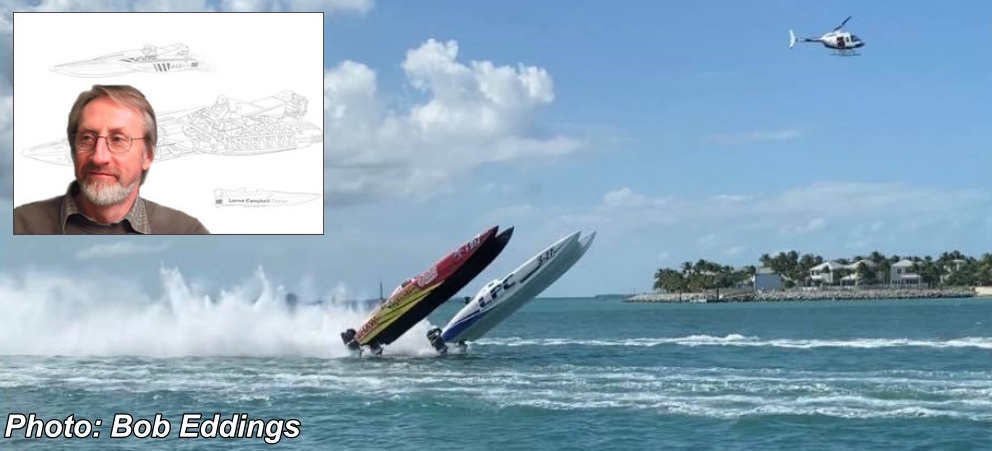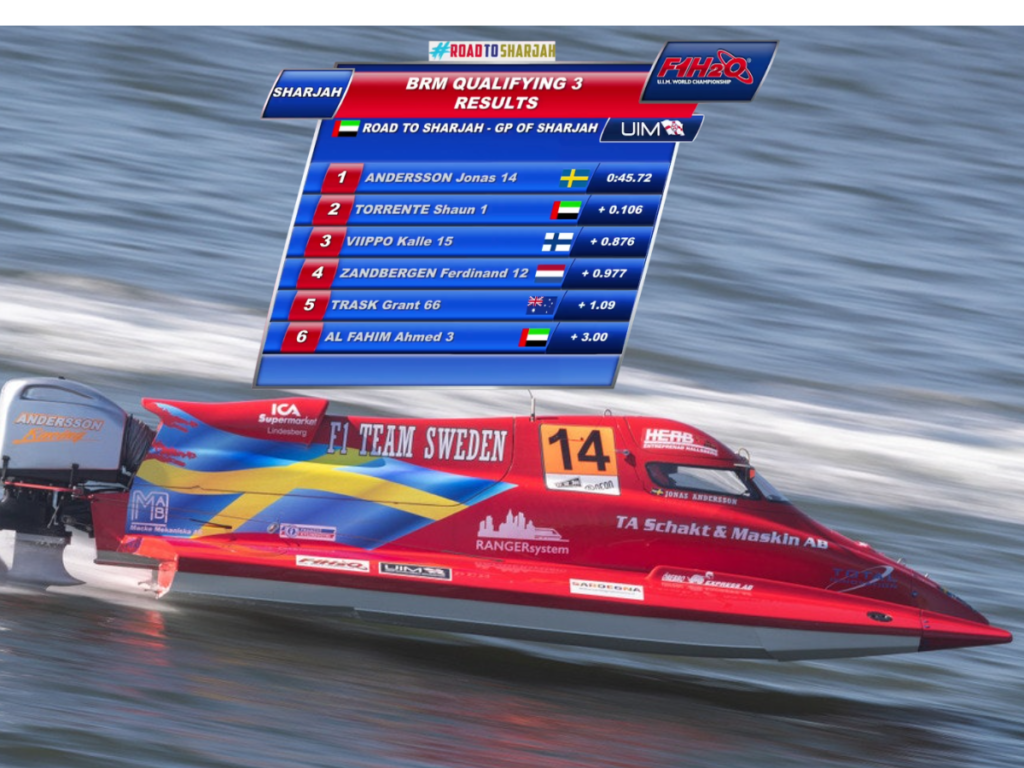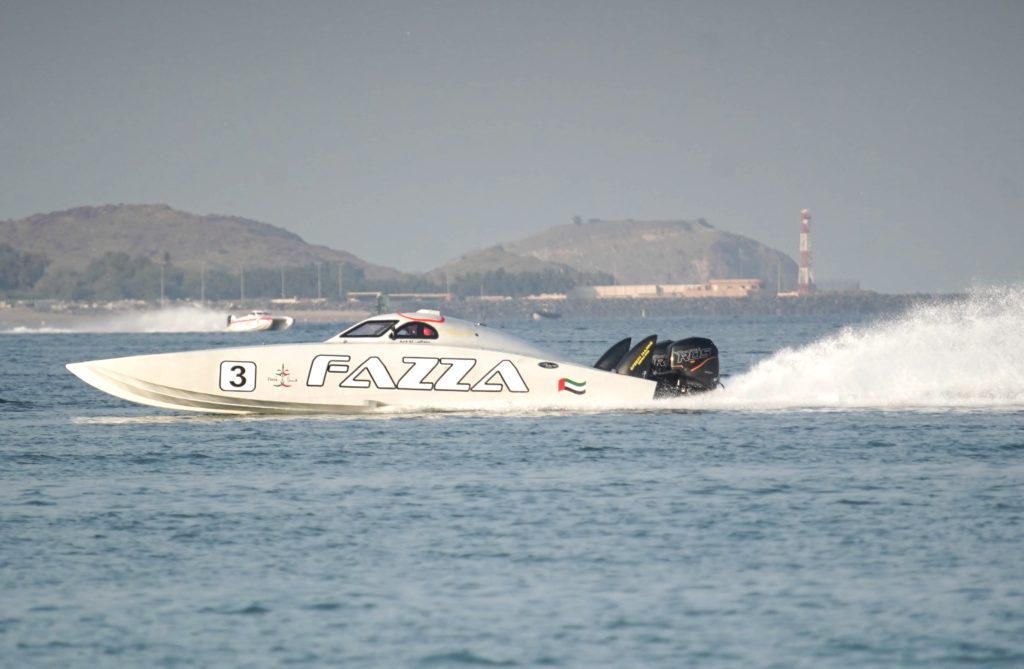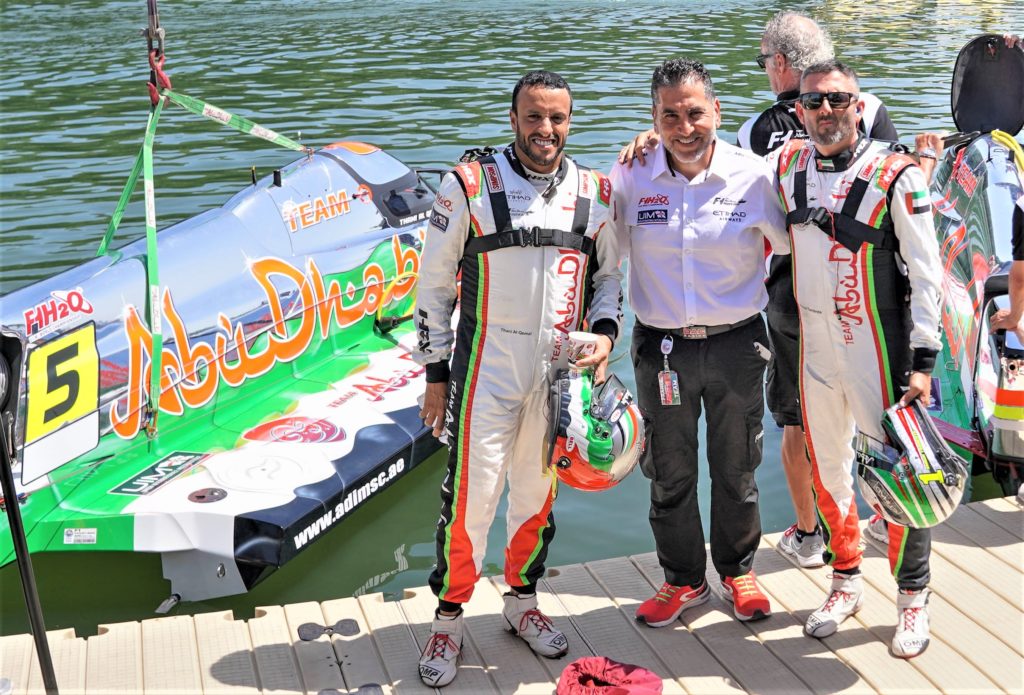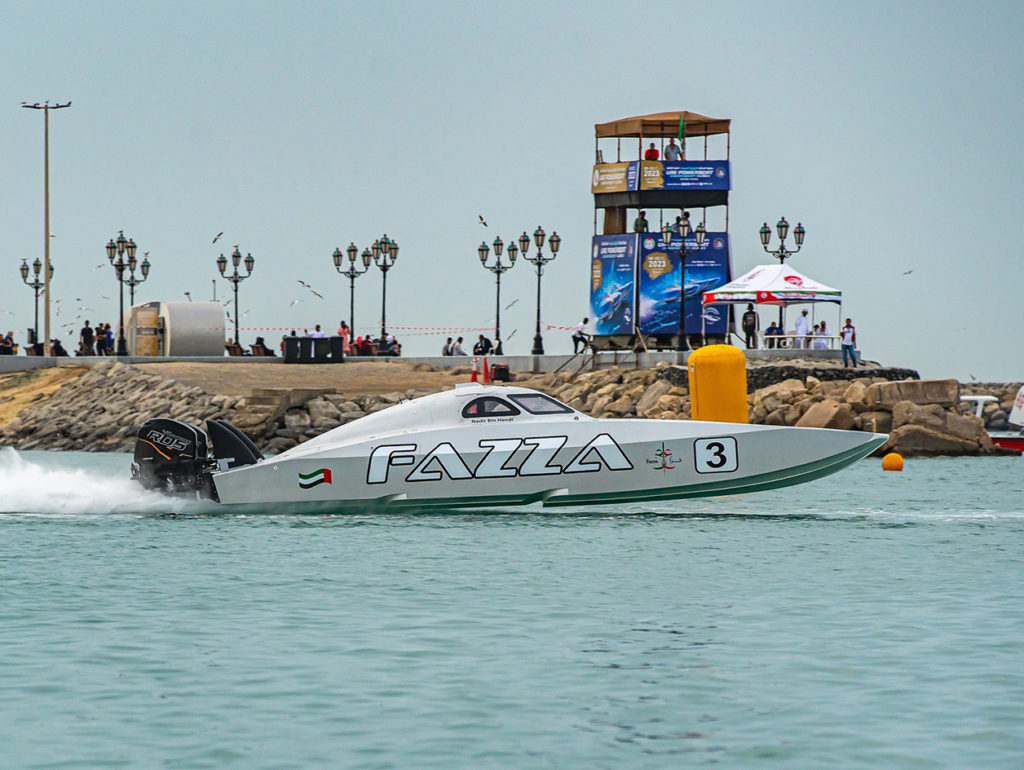Lorne Campbell has specialised in the design of high-speed powerboats since 1970 and his lines have been used to produce some of the most successful offshore racing catamarans.
He has been employed on occasion to analyse what has happened in high speed craft incidents and accidents, both racing and non-racing.

Lorne Campbell designs
His job is to look at the physical evidence, try to work out the truth and to give an opinion as to which side, if any, is closest to it.
I asked Lorne to share his views on the dramatic double flip of Team Allen Lawn Care and LPC at Key West.
My training has all been in the area of hydrodynamics rather than aerodynamics, but I have had five projects wind tunnel tested over the years and have picked up some idea of the underlying factors.
These are my thoughts:
The two cats were running very quickly and so close together that they were virtually touching each other – so, aerodynamically they were running as one, very wide, quadramaran!
The situation would need checking in a wind tunnel or by CFD but, basically we have gone from two cats of 32 feet to a single craft of the same length, double the weight and double the width.
Aerodynamically a cat is a wing and this means the aerodynamic aspect ratio – wing width (or ‘span’) divided by wing length (or ‘chord’) – has doubled.
Broadly, an increase in aspect ratio gives an increase in aero lift coefficient and, in this case that increase could be around 70% (in very approximate terms).
So, suddenly the boats are feeling a 70% increase in aero lift.
The two cats did open a gap between them during the flip, but they had gone past the point of no return by then.
Another way of looking at possible reasons for the double flip is that – just looking at the ram pressure in the tunnel alone – when a cat runs at normal attitude in contact with calm water, there is a range of angles of attack where it is stable – i.e. up to around, say, 8 degrees (very approximately – and craft will vary).
As the bow rises, within this range, a gap forward beneath the hulls opens up and air from the tunnel escapes, thus reducing the tunnel pressure and allowing the bow to drop again.
With two boats close together, the air escape gaps beneath the hulls on the sides next to each other, are sealed off – so you have the same air escape gap (i.e. the left side of one boat and the right side of the other) but there is double the amount of air (from the single, ‘double width’ hull) that needs to escape.
Again, this increases the lift under the ‘double width’ craft.
In practice, it is probably a combination of both of the above systems, and there may well be other factors, which I haven’t thought of.
The centre of aero lift acts forward of the centre of gravity, which is why there is the tendency for craft to back flip, and it is possible that with the ‘double width’ hull this aero lift centre moves further forward, thus increasing the ‘back flip’ leverage in addition to the above lift increases.
This double flip scenario has been seen before with circuit racing tunnel hulls (and, I believe with Unlimited Hydros), but it is the first time I’ve heard of it with offshore boats.
That doesn’t mean it hasn’t happened before, of course.








